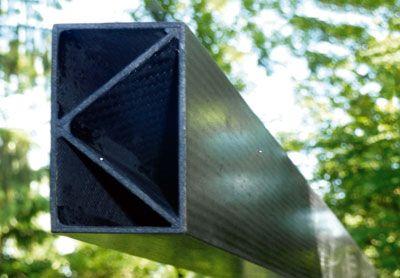 In combination with domestic granite or other hard stones, carbon fibers enable completely new construction materials and building materials. Theoretical calculations show that if the carbon fibers are made from algae oil, the production of innovative materials removes more carbon dioxide from the atmosphere than is released. A research project led by the Technical University of Munich (TUM) is now to advance these technologies.
In combination with domestic granite or other hard stones, carbon fibers enable completely new construction materials and building materials. Theoretical calculations show that if the carbon fibers are made from algae oil, the production of innovative materials removes more carbon dioxide from the atmosphere than is released. A research project led by the Technical University of Munich (TUM) is now to advance these technologies.
Manufacturing processes that consume more carbon dioxide than they release themselves are categorized by the latest World Climate Report (IPCC Special Report on Global Warming of 1.5 ° C) as an important option to tackle climate change. The aim of the recently launched project entitled "Green Carbon" is to develop algae-based manufacturing processes for polymers and carbon fiber-based lightweight construction materials that can be used, for example, in the aviation and automotive industries.
The development of the various processes of technological, economic and sustainability analyzes is accompanied. The research work of the TU Munich promotes the Federal Ministry of Education and Research (BMBF) with approximately 6,5 million.
Due to their rapid growth, microalgae, as cultivated in the globally unique algae technology on the Ludwig Bölkow campus of the Technical University of Munich, can produce the greenhouse gas CO2 actively store in the form of biomass. CO2 is bound in the form of sugars and algae oil. From these, starting materials for various industrial processes can be obtained with chemical and biotechnological processes.
Oil-producing yeasts, for example, produce yeast oil from algae sugars, a source of sustainable plastics. In addition, the yeast oil can be enzymatically split into glycerol and free fatty acids. The free fatty acids are the starting material for other products, including high-quality additives for lubricants; The glycerine can be converted into carbon fibers.
In the further course of the project, the plastics are combined with the carbon fibers to form corresponding composite materials. "The carbon fibers produced from algae are absolutely identical to the fibers currently used in industry," says Project Manager Thomas Brück, Professor of Synthetic Biotechnology at the Technical University of Munich. "They can therefore be used for all standard processes in aircraft and automotive engineering."
In addition, carbon fiber and hard stone can be used to produce novel construction materials using a process developed by the industrial partner Technocarbon Technologies. Not only do you have a negative CO2Balance, but are lighter than aluminum and more stable than steel.